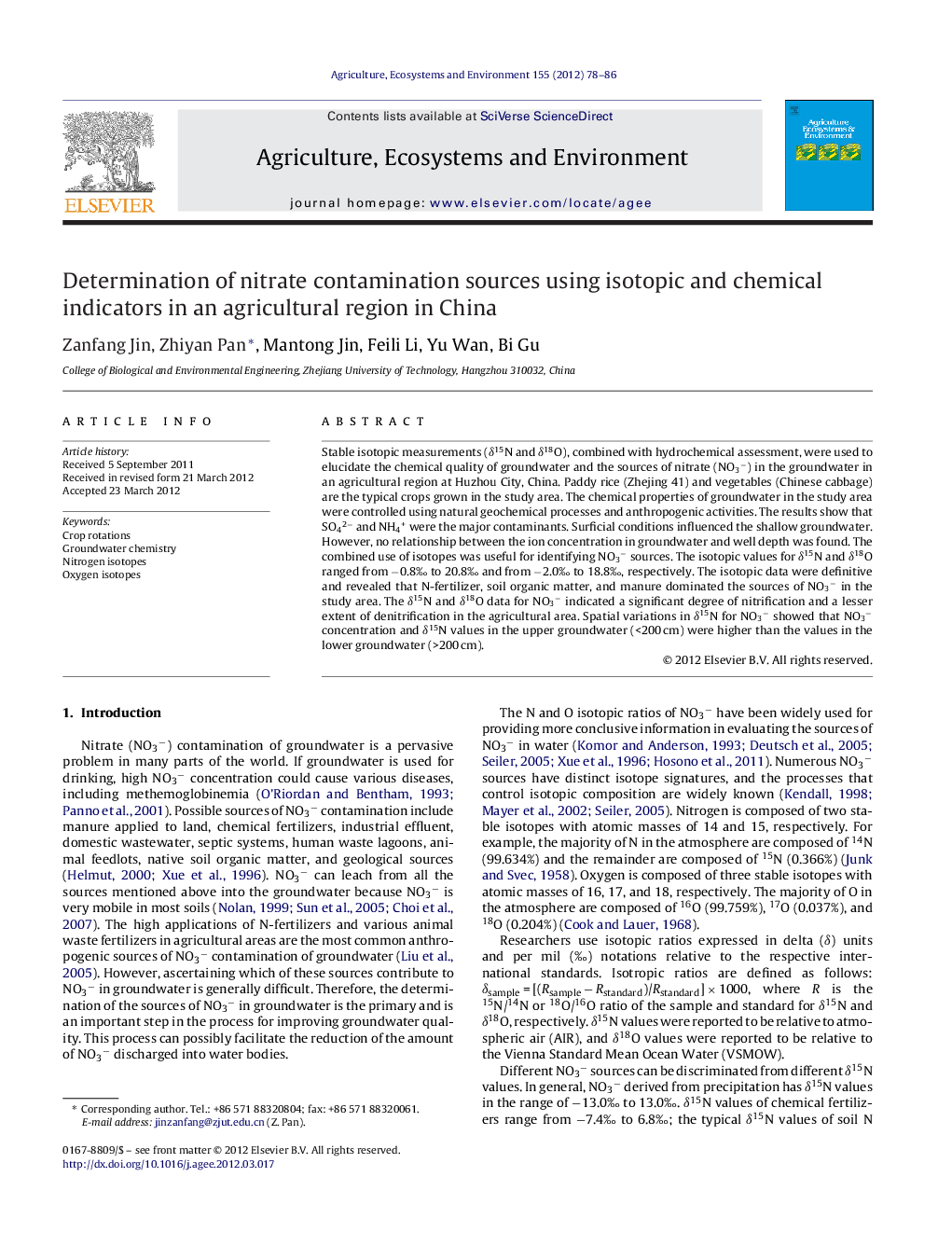| Article ID | Journal | Published Year | Pages | File Type |
|---|---|---|---|---|
| 2414563 | Agriculture, Ecosystems & Environment | 2012 | 9 Pages |
Stable isotopic measurements (δ15N and δ18O), combined with hydrochemical assessment, were used to elucidate the chemical quality of groundwater and the sources of nitrate (NO3−) in the groundwater in an agricultural region at Huzhou City, China. Paddy rice (Zhejing 41) and vegetables (Chinese cabbage) are the typical crops grown in the study area. The chemical properties of groundwater in the study area were controlled using natural geochemical processes and anthropogenic activities. The results show that SO42− and NH4+ were the major contaminants. Surficial conditions influenced the shallow groundwater. However, no relationship between the ion concentration in groundwater and well depth was found. The combined use of isotopes was useful for identifying NO3− sources. The isotopic values for δ15N and δ18O ranged from −0.8‰ to 20.8‰ and from −2.0‰ to 18.8‰, respectively. The isotopic data were definitive and revealed that N-fertilizer, soil organic matter, and manure dominated the sources of NO3− in the study area. The δ15N and δ18O data for NO3− indicated a significant degree of nitrification and a lesser extent of denitrification in the agricultural area. Spatial variations in δ15N for NO3− showed that NO3− concentration and δ15N values in the upper groundwater (<200 cm) were higher than the values in the lower groundwater (>200 cm).
► Groundwater was sampled from PVC pipes with various depths (from 30 cm to 300 cm). ► Groundwater quality in an agricultural area was assessed at Huzhou City in China. ► δ15N and δ18O was used to detect the nitrate sources at Huzhou City. ► Fertilizer, soil organic matter and manure were the NO3− sources in groundwater.
